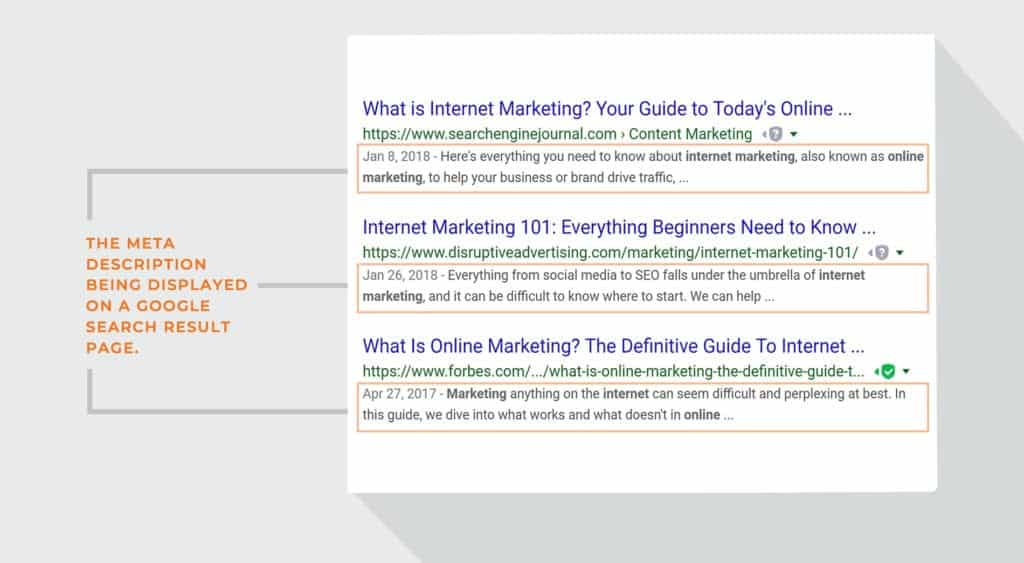Why ‘Mobilegeddon’ Is Not the End of Mobile Search As We Know It
Scott Sterner, SVP-Search & Performance Marketing
*Update: As of 2018, Google confirmed that it has decreased the length of their search result snippets. The company assured users that writing meta descriptions doesn’t change with longer search snippets, insisting that there is “no need for publishers to suddenly expand their meta description tags.” Google does not plan to state a new maximum snippet length, since these are generated automatically.
Companies that have already lengthened their meta descriptions are encouraged to not focus too much on shortening, since many of Google’s chosen snippets are dynamic (not pulled from meta descriptions). In fact, a recent Yoast study showed most snippets Google shows are not from the meta description, but rather from the content on your web pages.
How long should your Meta Description be? A question that haunts SEO’s far and wide. With Meta Descriptions having zero effect on search ranking, we SEO-ers spend a significant amount of time formatting and crafting the perfect Meta Description. So, what’s the end game? While a concise and well-structured Meta Description won’t improve your rankings, it has the potential to generate more views for that page as well as the entire website. Which brings us to some *breaking news* in the SEO world…LONGER META DESCRIPTIONS ARE FINALLY HERE! (we rejoice as our keyboards weep).
As we all know, a big stickler for us SEO folks is staying within character and pixel limits when compiling Page Titles, URLs and Meta Descriptions. I’m sure many, if not most of you, have had a discussion with someone in SEO regarding the importance of Meta Descriptions and the direct correlation between informative, concise Meta Descriptions and CTR. For years, the suggested and often keyboard-slamming Meta Description limit was ~160 characters, which rarely left ample room to be creative. Alas, Meta Description-induced headaches can now be removed from WebMD.
Now that we have rejoiced in unison, let’s dive deeper into this update and what it means for the industry. Since this update launched, which occurred at the beginning of the month, most Meta Descriptions in Google have been averaging 230 characters in length. This is of immense importance to us SEO-ers, as we are no longer handcuffed by limited space. We can expand our creativity and keyword-usage, and make stronger CTA’s without getting cut-off by Google. While this update is a significant step forward in enhancing search results, all SEO-ers should be leery of some consequences that may come from this update.
Well, obviously it isn’t just to make those of us in the industry happy, that’s for sure! What this update shows is that Google is further pushing the importance of transparency when it comes to on-page content. They want to be absolutely certain that your webpage is going to directly answer what the site visitor originally searched for. Google cares more about UX than anything else, so by allowing webmasters to elaborate further in Meta Descriptions, it builds a stronger trust value with Google and your brand, thus raising user retention with their search engine (which is Google’s ultimate end-goal).
To quote a literary savant, “All that is gold does not glitter.” A potential downside that may occur from this meta description update is the ever-growing importance of your search ranking. While never outwardly stated, you could make the argument that being in the Top-10 for a search query is generally seen as an accomplishment and a strong benchmark of success. However, with longer Meta Descriptions, we can assume there will be a decrease in scrolling, meaning it may now be vital for brands to rank within the Top-5 for the keywords for which they are looking to rank. Users are going to find what they are looking for much quicker, while websites ranking 6-10 begin to pile up dust.

Now that we’ve covered the basics, does your SEO strategy need to change? The answer is both yes and no. If your current Meta Descriptions, which sit around 160 characters, meet Google requirements and are generating the appropriate CTR for their current rankings, then it isn’t necessary to make any changes. However, if you have Meta Descriptions that aren’t up to Google best practices, Google may implement their own content into the Meta Description which may have negative consequences for your CTR.
Nonetheless, whether the Meta Description length is 60, 160, 240, or 500 characters, the strategy never changes. Be concise. Be transparent. Your Meta Description should relay to the user that they can find the answer to their query on your webpage. By doing so, you are building stronger bonds between your site and potential site visitors.
Want to learn more about the perfect meta description strategy for your company? Contact BCM today!
Scott Sterner, SVP-Search & Performance Marketing
Google has had a busy year so far, rolling out updates and launching new products every month. From drastic SERP changes to new ad layouts, search...

11 min read
5 Actions to Take Now To Turn Google’s Broad Match Modifier Change To Your Advantage Google’s recent announcement As you may have heard by now,...
